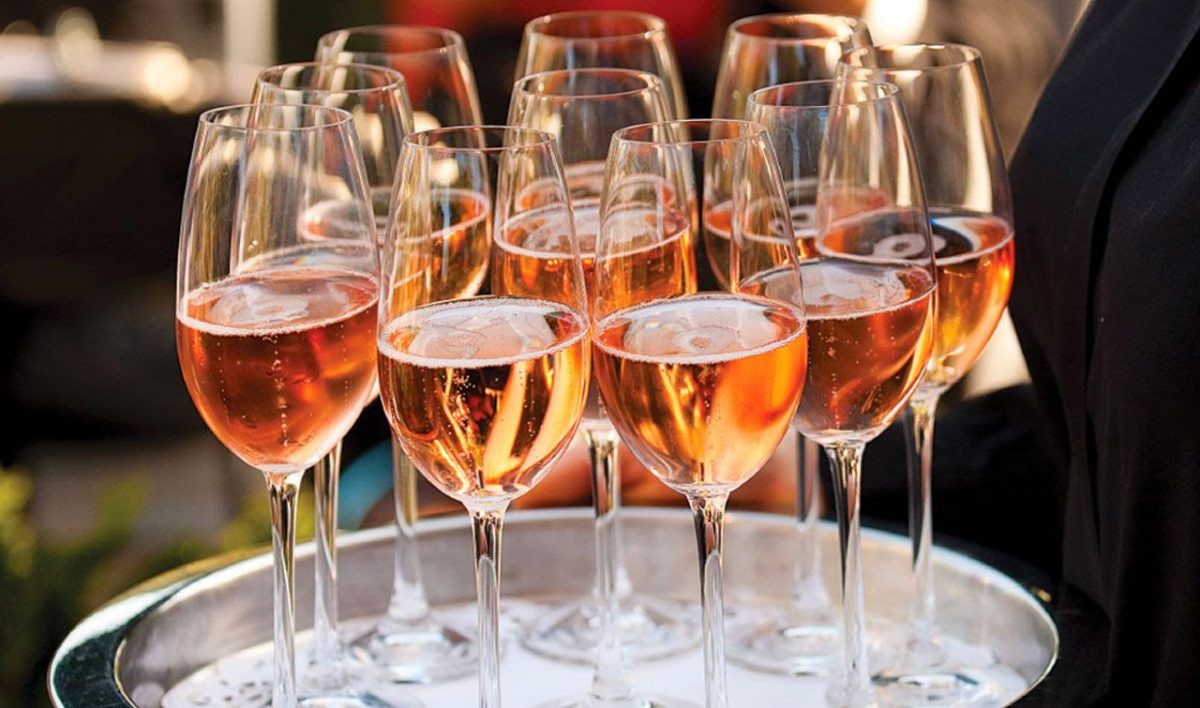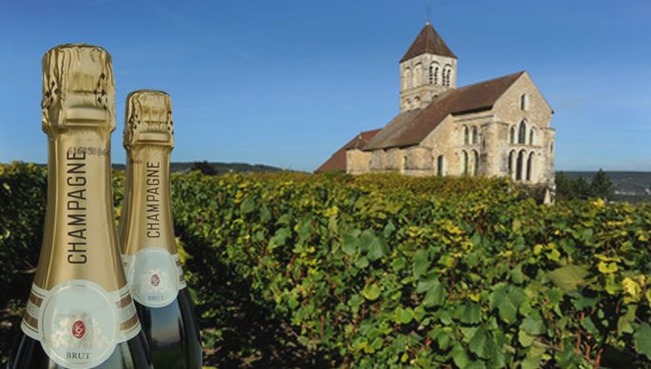The Champagne production zone (AOC) is defined and delimited by a law since 1927, stretching over 34,286 hectares of vineyards. It lies 150 kilometres East / North-East of Paris, and is made-up of plots from 320 villages in five departments: Marne (66%), Aube (23%), Aisne (10%) – also shared by Haute-Marne and Seine-et-Marne. The vineyards are also divided by “crus”, a qualitative division of the appellation. Of the 320 villages, 17 are Grand Cru and 42 are Premier Cru.
Champagne terroir has two major distinguishing features: northerly latitude and a dual climate that is subject to oceanic and continental influences. The Champagne region is located near the northern limits of the wine world along the 49th parallel, with the coordinates of 49°5 and 49° North – this means cold climate and harsh weather conditions. The oceanic influence brings steady rainfall and the continental influence ensures ideal levels of summer sunlight, but often causes devastating winter frosts.
The average annual temperature in Reims and Epernay) is 11°C. This complex weather pattern distinguishes the Champagne viticultural zone from the other terroirs in the same group.
The subsoil in Champagne is predominantly limestone –including the outcrops, which consist of sedimentary rock (75% limestone), chalk, marl and limestone proper. This type of subsoil provides good drainage and also imparts that particular mineral flavour found in certain Champagne wines.
These regional differences lead to different styles of wines, different and aromas developing in the fruits.
On 4 July 2015, in Bonn, Germany the UNESCO World Heritage Committee delivered a decision to include the “Champagne hillsides, houses and cellars” on its World Heritage list.
“The property encompasses sites where the method of producing sparkling wines was developed on the principle of secondary fermentation in the bottle since the early 17th century to its early industrialization in the 19th century. The property is made up of three distinct ensembles: the historic vineyards of Hautvilliers, Aÿ and Mareuil-sur-Aÿ, Saint-Nicaise Hill in Reims, and the Avenue de Champagne and Fort Chabrol in Epernay. These three components – the supply basin formed by the historic hillsides, the production sites (with their underground cellars) and the sales and distribution centres (the Champagne Houses) – illustrate the entire champagne production process. The property bears clear testimony to the development of a very specialized artisan activity that has become an agro-industrial enterprise.”
R O S É C H A M P A G N E
Rosé Champagnes are distinct from brut and blanc de noirs in that they are noticeably and intentionally colored, with hues that span from light pink to copper salmon. There are two main methods of creating this style:
Blended or Rosé d’assemblage
This method is most common – it allows the producer to obtain colour and density identical year to year. It consists of blending still white wine (before its second fermentation) with 5 – 20% of red wine, vinified to be non tannic.
Macerated or Rosé de saignée
This process consists of allowing the grape must to remain in contact with the skins of black grapes (Pinot noir and Pinot Meunier) for a few hours. The natural pigments in the skins begin to colour the juice and at the same time enrich the juice with their aromatic components. Rosé de saignée champagnes are generally richer in taste and have a vinous character, which makes them particularly suitable to be served with food.
Rosé Champagne is produced in both vintage/millesimé and non-vintage versions. Although there is variation in the sweetness levels, the wines are most often dry (brut or sec) in style.
Rosé Champagne account for 3-5% of Champagne’s yearly production. Most of the Champagne houses have this style their portfolios, including: Krug, Laurent-Perrier, Billecart-Salmon, Dom Pérignon, Cristal Veuve-Clicquot. With Billecart-Salmon and Laurent-Perrier’s leading the pack in making Rosé champagne a speciality.
UK is Champagne’s largest export market – sales increased by 6.1% in 2014 reaching 32,675,232 bottles. While US is the second largest export market – sales grew slightly, up 7.3% to 19,152,709 bottles, with rose up 14.4% to 2,758,364 bottles.
US figures 2010-2014
Total Export Rosés % export
2010 134,364,880 11,437,497 8.51%
2011 141,328,649 12,699,146 8.99%
2012 137,349,432 13,004,384 9.47%
2013 137,639,340 13,371,939 9.72%
2014 144,870,262 13,731,634 9.48%
Rosé Top Ten Markets 2014
2014 Country
1 ETATS-UNIS
2 ROYAUME-UNI
3 ALLEMAGNE
4 JAPON
5 SUISSE
6 ITALIE
7 BELGIQUE
8 ESPAGNE
9 NIGÉRIA
10 RUSSIE
Some salient characteristics of our favourite Rosé Champagnes:
Dom Pérignon Metamorphosis Rose 2003
Exquisite soft rose-colour with nose of cherry and soft citrus; creamy textured and precise with flavours that are complex and rich; focused and elegant with subtlety and depth; graceful and well balanced with a long echoing finish.
96 Points
Roederer Cristal Rosé 2002
Medium pink hue with lively effervescence; soft aromas of strawberry, cherry and blood orange with some notes of butter and dried flowers; crisp Chardonnay -underlay pinot fruit on the palate with a very silky, long finish.
93 Points
Krug Rosé – NV
Pale salmon colour (with some subtle hint of pink) and fine bubbles; aromas of rose hips, ham, mulberries, redcurrant, peony, pepper & pink grapefruit; mouthfilling but refilled and elegant layers of honey, citrus and dried fruit with long finish.
96 Points
Delamotte Brut Rosé NV
Very pale, delicate rose hue; fresh berry fruit and blood orange come through on the nose and palate, with some chalky mineral notes – medium finish.
92 Points
Pascal Doquet Brut Rosé Premier Cru NV
Pale salmon colour; aromas of red fruit, flowers, and minerals lead to a palate with hints of strawberry, toast, and minerals – fresh and ample mouthfeel.
92 Points
Perrier-Jouet Rose Belle Epoque 2004
Light salmon pink; with delicate aromas of floral, strawberry, raspberry, orange and pink grapefruit; fresh, refined attack with subtly crisp notes of pomegranate and pink grapefruit; full-bodied with a long, silky finish.
94 Points
Charles Heidsieck, Brut Rosé Réserve
Very pale pink, rich toasty aromas with creamy texture; finely honed acidity lending a mouthwatering impression to flavors of crème de cassis, toasted brioche, lemon curd and roasted almond; long, spicey finish.
93 Points
Liz Palmer




